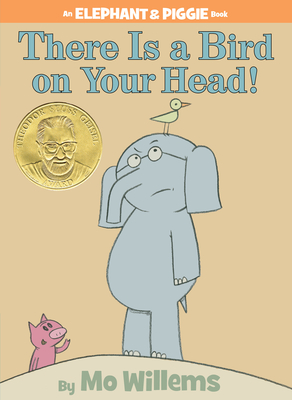The 16th Elephant and Piggie book by Mo Willems, Happy Pig Day!, is being released today and, in honor of its publication, I spent last night composing this long-winded ode to the Elephant and Piggie series, a collection of easy reader titles that have had a big impact on our household. I’ve wanted to write about Elephant and Piggie for a while now, but it’s hard to know where to begin. Because, at this point, the way I feel about Mo Willems as a children’s book creator is the same way I feel about the Coen Brothers as film directors. It’s not a question of which of their works are good and which are bad. It’s pretty much just a question of measuring excellence.
Quick semi-related diversion: In my opinion, the Coen Brothers have never made a bad movie – yes, Ladykillers wasn’t Raising Arizona, but it was way better than most average film comedies (for Hanks’ lead performance alone), and Intolerable Cruelty is an unheralded gem – so, when discussing their films, I mostly just find myself ranking favorites. The same thing happens when I talk about Mo Willems. I simply have yet to meet a Willems title that my family hasn’t enjoyed. So, when looking at his whole body of work, I’ll admit, it turns into a semi-pointless exercise of pure fanboy-esque categorization, with me ranking his titles from “the very best” to the “normal best.” (Ooh, aren’t I a harsh headmaster? Grading his books from “A+” all the way to “A-“.)
That being said, although I love the Pigeon (like many others, Don’t Let the Pigeon Drive the Bus was our first Willems title), the large bulk of my Mo-love is reserved for the Elephant and Piggie books, a remarkable series for beginning readers. The E&P series, which began in 2007 with There Is a Bird on Your Head!, falls under the category of “easy readers”, a term that generally describes books designed for children who are just starting to read on their own. Easy readers are equal parts illustrations and large, easy-to-read text, and their vocabulary is normally limited to words that appeal to kindergarten to second-grade reading levels.
The Elephant and Piggie books boil down the easy reader to its essential components. The lead characters, Gerald the elephant and Piggie the pig, stand in front of a plain white backdrop, acting out their stories with just their body language and bare minimum of props. The earnest duo – like a more affectionate animal version of Laurel and Hardy – communicate through sound effects and large-text word balloons that make it easy for kids to pick out key words and follow the action. The dialogue-driven E&P books are, actually, a lot like wonderful, condensed one-act plays for kids. There are series of engaging verbal volleys between Elephant and Piggie in each volume, replete with knowing humor, repetition, and facial expressions that really help the young readers understand the inflection and emphasis of the words. [read the rest of the post…]
{ 0 comments }

